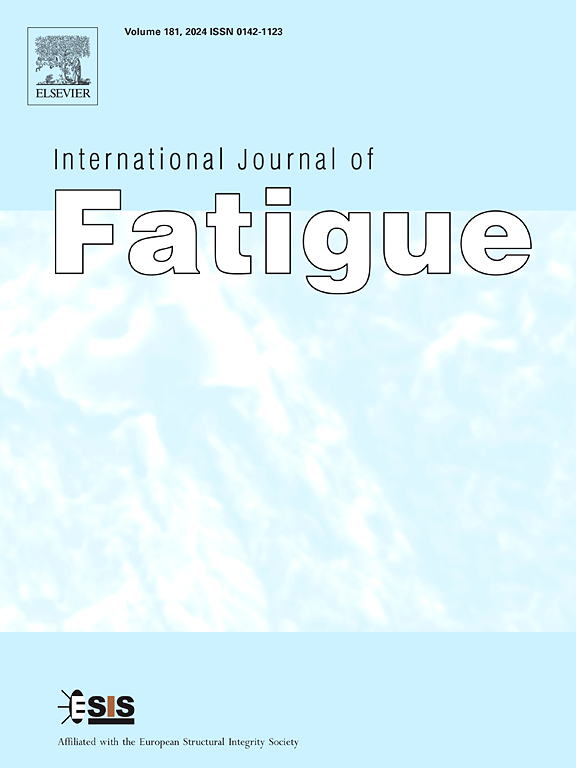A physics-informed Bayesian neural network model for probabilistic prediction of fatigue crack growth rate at different temperatures
IF 6.8
2区 材料科学
Q1 ENGINEERING, MECHANICAL
引用次数: 0
Abstract
A physics-informed Bayesian neural network (PIBNN) method is proposed for predicting the probabilistic model for fatigue crack growth rate (FCGR) and fatigue crack growth life (FCGL). First, the Bayesian neural network (BNN) is employed for the probabilistic prediction of FCGR. Subsequently, the physical FCGR model that accounts for temperature effects is integrated into the BNN model as a loss function to enhance the model’s generalization capability. The mean and dispersion errors of the predictions at different temperatures are less than 10% compared to the test data. The probabilistic prediction of FCGL is ultimately realized through the integration of PIBNN with a Markov chain, in which the state transition probability matrix characterizes the transition probabilities between dispersion states.
基于物理的贝叶斯神经网络模型在不同温度下疲劳裂纹扩展速率的概率预测
针对疲劳裂纹扩展速率(FCGR)和疲劳裂纹扩展寿命(FCGL)的概率模型,提出了一种基于物理信息的贝叶斯神经网络(PIBNN)预测方法。首先,将贝叶斯神经网络(BNN)应用于FCGR的概率预测。随后,将考虑温度效应的物理FCGR模型作为损失函数集成到BNN模型中,以增强模型的泛化能力。与试验数据相比,不同温度下预测结果的平均误差和色散误差均小于10%。FCGL的概率预测最终通过PIBNN与马尔可夫链的集成来实现,其中状态转移概率矩阵表征了色散状态之间的转移概率。
本文章由计算机程序翻译,如有差异,请以英文原文为准。
求助全文
约1分钟内获得全文
求助全文
来源期刊

International Journal of Fatigue
工程技术-材料科学:综合
CiteScore
10.70
自引率
21.70%
发文量
619
审稿时长
58 days
期刊介绍:
Typical subjects discussed in International Journal of Fatigue address:
Novel fatigue testing and characterization methods (new kinds of fatigue tests, critical evaluation of existing methods, in situ measurement of fatigue degradation, non-contact field measurements)
Multiaxial fatigue and complex loading effects of materials and structures, exploring state-of-the-art concepts in degradation under cyclic loading
Fatigue in the very high cycle regime, including failure mode transitions from surface to subsurface, effects of surface treatment, processing, and loading conditions
Modeling (including degradation processes and related driving forces, multiscale/multi-resolution methods, computational hierarchical and concurrent methods for coupled component and material responses, novel methods for notch root analysis, fracture mechanics, damage mechanics, crack growth kinetics, life prediction and durability, and prediction of stochastic fatigue behavior reflecting microstructure and service conditions)
Models for early stages of fatigue crack formation and growth that explicitly consider microstructure and relevant materials science aspects
Understanding the influence or manufacturing and processing route on fatigue degradation, and embedding this understanding in more predictive schemes for mitigation and design against fatigue
Prognosis and damage state awareness (including sensors, monitoring, methodology, interactive control, accelerated methods, data interpretation)
Applications of technologies associated with fatigue and their implications for structural integrity and reliability. This includes issues related to design, operation and maintenance, i.e., life cycle engineering
Smart materials and structures that can sense and mitigate fatigue degradation
Fatigue of devices and structures at small scales, including effects of process route and surfaces/interfaces.
 求助内容:
求助内容: 应助结果提醒方式:
应助结果提醒方式:


